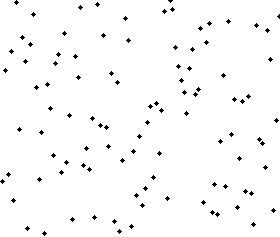正文
重复步骤直到某一指针达到序列尾;
将另一序列剩下的所有元素直接复制到合并序列尾。
public class Sort {
public static > void mergeSort( T[] arr ) {
T[] tmpArr = (T[]) new Comparable[arr.length];
mergeSort(arr, tmpArr, 0, arr.length - 1);
}
private static >
void mergeSort( T[] arr, T[] tmpArr,
int left, int right ) {
if ( left 2;
mergeSort(arr, tmpArr, left, center);
mergeSort(arr, tmpArr, center + 1, right);
merge(arr, tmpArr, left, center + 1, right);
}
}
private static > void merge( T[] arr, T[] tmpArr,
int lPos, int rPos, int rEnd ) {
int lEnd = rPos - 1;
int tPos = lPos;
int leftTmp = lPos;
while ( lPos if ( arr[lPos].compareTo( arr[rPos] ) 0 )
tmpArr[ tPos++ ] = arr[ lPos++ ];
else
tmpArr[ tPos++ ] = arr[ rPos++ ];
}
while ( lPos //copy the rest elements of the right half subarray. (only one loop will be execute)
while ( rPos //copy the tmpArr back cause we need to change the arr array items.
for ( ; rEnd >= leftTmp; rEnd-- )
arr[rEnd] = tmpArr[rEnd];
}
}

归并排序有许多变种,比如梯级归并排序(Cascade Merge Sort)、振荡归并排序(Oscillating Merge Sort)和多相归并排序(Polyphase Merge Sort)。以多相归并排序为例,它经常用在外排序中,可以减少原始归并排序每次循环需要遍历的元素个数,因为原始的归并排序每次都做二路归并,在文件数量多的时候效率低下。
Strand排序(Strand Sort)
Strand排序不断地从待排序的序列中拉出排好序的子列表,并归并成一个最终的结果。该算法的平均和最坏时间复杂度都达到了O(n2),最好时间复杂度为O(n)。Strand排序高效的条件要求:
举例来说,现在有原始列表(4,5,2,3,1):
procedure strandSort( A : list of sortable items ) defined as:
while length( A ) > 0
clear sublist
sublist[ 0 ] := A[ 0 ]
remove A[ 0 ]
for each i in 0 to length( A ) - 1 do:
if A[ i ] > sublist[ last ] then
append A[ i ] to sublist
remove A[ i ]
end if
end for
merge sublist into results
end while
return results
end procedure
分布类排序
基数排序(Radix Sort)
相较于前面严格的比较排序,基数排序更多地利用了待排序元素本身的特性。待排序元素需要是整型,基数排序时将整数按照位数切分成不同的数字,然后按每个位数分别比较;但是推广一下,整数也可以表达字符串,和符合特定格式的浮点数,所以基数排序堆元素的要求进一步降低。具体实现步骤:
待比较元素统一成相同格式(例如短数前面补零),然后从最低位开始,依次进行一次排序,接着是次低位……直到最高位也完成排序。
例如有元素(432,546,723):














